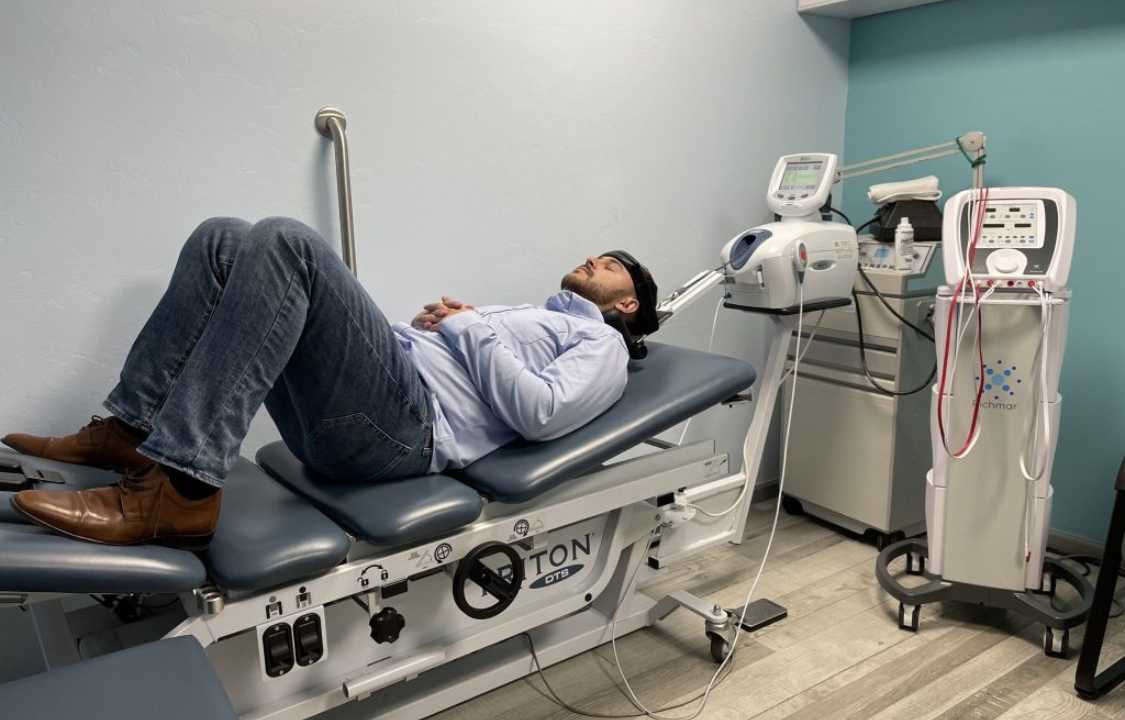Back and neck pain afflict many individuals, and in severe cases, it can be debilitating. While these pains can arise from various causes, some are associated with spinal disc issues, which are the cartilaginous structures that act as shock absorbers between the vertebrae. Conditions like degenerative disc disease, bulging or herniated discs, radiculopathy (pinching of spinal nerve roots), and spinal stenosis (narrowing of the spinal canal) can lead to significant pain, particularly in the neck and lower back areas. Additionally, pressure on the sciatic nerves can result in radiating pain from the buttocks through the hips and down the legs.
To address these distressing symptoms, one potential solution is spinal decompression therapy. Spinal decompression is a treatment method aimed at stretching the spine and altering its positioning to alleviate pressure on the spinal discs. There are both non-surgical and surgical approaches to spinal decompression, both of which can provide substantial relief from pain.
Non-Surgical Spinal Decompression Therapy
Non-surgical spinal decompression therapy is a non-invasive method designed to alleviate pressure on spinal discs and nerves. It involves the use of specialized equipment and techniques to achieve this objective. Here’s how it works:
Treatment Procedure
Non-surgical spinal decompression therapy typically involves patients lying on a specialized table specifically designed for this purpose. This table usually comes in two primary forms:
1. Cable and Pulley System: In this approach, a system of cables and pulleys is employed to provide a controlled and precise pull on the body. The intention is to gently stretch the spine, reducing pressure on the spinal discs and nerves, ultimately alleviating pain.
2. Segmented Table: The segmented table consists of independently moving portions along the top and bottom of the body. While the patient is at rest, the table performs a “massage,” with each segment moving in opposition to stretch the spine and create negative pressure.
Both styles of machines can yield positive results, but some experts prefer the segmented table because it tends to induce less “muscle guarding.” Muscle guarding occurs when the body is tense and prepared for action, much like when holding a “plank” exercise position, but in this case, the muscles are only partially extended. Prolonged muscle guarding can lead to additional soreness.
A typical course of spinal decompression therapy involves approximately 20 sessions, each lasting from half an hour to a quarter of an hour. In some cases, chiropractors may complement these sessions with electrical stimulation, heat or cold therapy, and occasionally ultrasounds to stimulate muscles using sound waves, generating heat to promote healing.
Pain and Discomfort: While it’s common to experience some soreness during the treatment, the procedure should not cause an abundance of pain. In fact, the primary purpose of spinal decompression therapy is to reduce the pressure on the discs and nerves responsible for the initial pain. However, if you experience sharp pain during the procedure, it is advisable to inform your chiropractor immediately to ensure your safety and comfort.
Considerations and Precautions
While non-surgical spinal decompression therapy can be beneficial for many individuals, it may not be suitable for everyone. There are certain medical conditions that may contraindicate this form of treatment, potentially exacerbating existing health issues. These conditions include:
- Tumors
- Fractures
- Advanced osteoporosis
- Abdominal aortic aneurysm
Patients with metal implants in the spine should also be cautious when considering this therapy and consult a licensed medical professional for guidance.
Surgical Decompression Therapy
Surgical decompression therapy, often referred to as “lumbar decompression surgery,” is a more invasive approach to address spinal issues. This surgical method involves one of three primary procedures, each performed under general anesthesia:
1. Laminectomy: This procedure aims to relieve pressure on nerves by removing a section of spinal bone.
2. Discectomy: Similar to a laminectomy, this procedure involves the removal of a section of the damaged spinal disc.
3. Spinal Fusion: In spinal fusion surgery, two or more vertebrae are fused together using a bone graft to enhance the spine’s stability.
Surgical Risks and Recovery
As with any surgical procedure, there are potential risks associated with surgical decompression therapy. However, serious complications are relatively rare. The possible risks include nerve damage, tissue damage, blood clots, bleeding, infection, and anesthesia-related allergic reactions. It is important to note that the surgery’s effectiveness can vary, and some patients may experience limited results.
Recovery after surgical decompression therapy depends on the complexity of the procedure and individual factors. In general, patients can leave the hospital within four days, with the ability to walk returning within a day. However, strenuous activities are typically restricted for about six weeks, and a return to work may be possible within the same timeframe, provided the job does not involve heavy lifting or strenuous physical activities.
In conclusion, spinal-related pain can be agonizing and debilitating, but there are solutions available that can significantly improve the quality of life and provide effective relief. Non-surgical spinal decompression therapy can be beneficial for most types of disc or nerve-related problems, with the potential for both short-term and long-term relief. These techniques are generally straightforward and result in minimal pain, making them a promising choice for many individuals.
In more severe cases, surgical lumbar decompression can effectively address more complex problems and provide substantial pain relief or even a complete resolution of the issue. However, it is essential to understand that surgical procedures come with risks, even though they are generally rare.
As with any medical concern, it is crucial to consult with a professional medical doctor or chiropractor who can provide individualized advice and recommendations based on your specific condition and needs. Your healthcare provider can help you determine the most suitable approach to alleviate your pain and improve your overall well-being.

